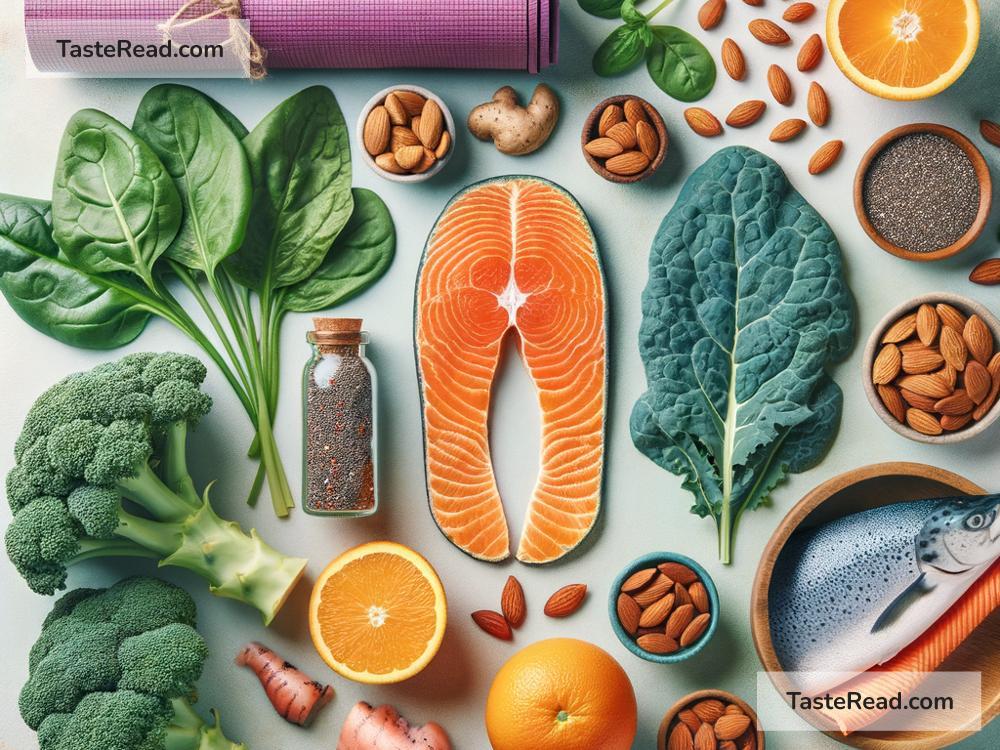Foods for Improving Flexibility: Simple Nutrition Tips for a More Agile You
Are you looking to touch your toes without pain or want to improve your yoga poses? Flexibility plays a key role in physical fitness, injury prevention, and overall wellbeing. While regular stretching and movement exercises are essential for boosting flexibility, what you eat also makes a big difference! Certain foods can improve muscle health, reduce stiffness, and even support joint mobility. In this article, we’ll explore simple, everyday foods that can help you become more flexible.
Why Food Matters for Flexibility
Before we dive into the list of foods, let’s understand why food impacts flexibility. Your muscles, joints, ligaments, and tendons are all connected to how flexible you feel. For these body parts to function optimally, they need proper hydration, nutrients, and reduced inflammation. A balanced diet not only keeps you energetic for workouts but also provides your body with what it needs to recover, repair, and stretch more easily over time.
1. Hydrating Your Body with Water
Flexibility starts with hydration. Did you know that your muscles are made up of about 75% water? Staying hydrated ensures that your muscles don’t dry out, which can lead to stiffness. Dehydrated muscles lose elasticity and make stretching uncomfortable. Drink plenty of water throughout the day, especially if you’re doing physical activities like yoga or dancing.
Tip: Add a slice of lemon or cucumber to your water for a refreshing twist!
2. Fatty Fish for Joint Health
Fatty fish like salmon, mackerel, and sardines are loaded with omega-3 fatty acids. These healthy fats reduce inflammation in the body, which can make your joints feel more mobile and less stiff. Omega-3s also help protect the cartilage that cushions your joints, making movement feel smooth and pain-free.
If you’re vegetarian or don’t eat fish, you can still get omega-3s by eating chia seeds, flaxseeds, or walnuts.
3. Leafy Greens for Muscle Recovery
Spinach, kale, and other leafy greens are rich in magnesium, which plays a crucial role in muscle recovery and relaxation. When you exercise or stretch, your muscles may contract and feel tight. Magnesium helps muscles relax afterward, giving them the opportunity to lengthen more easily the next time you stretch.
Leafy greens also contain antioxidants that combat inflammation, further supporting your flexibility goals.
4. Bananas to Prevent Cramping
Nobody likes muscle cramps while exercising or stretching! Bananas are an excellent source of potassium, a mineral that prevents cramps and improves muscle function. Potassium helps balance water and electrolytes in your body, which is essential for maintaining smooth, flexible movements.
Snack on a banana before or after your workout for a natural boost of energy.
5. Ginger for Reducing Stiffness
If you feel stiff when waking up or stretching, ginger can help. This spicy root is known to improve circulation and reduce inflammation in muscles and joints. Better blood flow means your muscles receive more nutrients and oxygen, which can speed up recovery and help them stay loose and limber.
Try adding ginger to your meals, tea, or smoothies to enjoy its benefits.
6. Nuts and Seeds for Healthy Fats
Nuts like almonds, cashews, and seeds like sunflower or pumpkin seeds are packed with healthy fats, protein, and magnesium. These nutrients support muscle repair, reduce inflammation, and provide sustained energy for your stretching routines.
Carry a small handful of nuts or seeds with you as an easy snack during the day.
7. Bone Broth for Joint Cushioning
Bone broth has gained popularity recently—and for good reason! It’s rich in collagen, a protein that strengthens your joints, ligaments, and tendons. Collagen also keeps your skin elastic, which contributes to overall flexibility.
Sipping on bone broth or using it as a base for soups can be a soothing way to keep your joints healthy.
8. Turmeric for Fighting Inflammation
Turmeric is a golden spice often used in curries, but it’s also a powerful anti-inflammatory food. Its main compound, curcumin, reduces muscle soreness and stiffness, making movements smoother. To absorb turmeric’s benefits better, combine it with black pepper.
Add turmeric to your meals, or mix it into warm milk for a comforting drink.
9. Colorful Fruits for Antioxidants
Bright fruits like oranges, berries, and pineapples are rich in vitamin C and other antioxidants that protect your body from oxidative stress. Oxidative stress can cause stiffness and make your muscles recover slower. Vitamin C is also great for collagen production, keeping your joints flexible and strong.
Enjoy a fruit salad as a refreshing snack or dessert!
10. Whole Grains for Sustained Energy
Whole grains like oats, quinoa, and brown rice provide your body with complex carbohydrates that release energy slowly. Stretching and exercising efficiently require stable energy levels, and whole grains help keep you fueled without sudden crashes.
Swap white bread and pasta for whole-grain versions to make flexibility-friendly choices.
Final Tips: Balance Is Key
Remember, no single food will instantly make you more flexible. Improving flexibility is a combination of consistent stretching exercises, staying active, and eating a nutrient-rich diet. Aim to include a mix of these flexibility-friendly foods in your meals while avoiding processed foods and sugary snacks, which can increase inflammation and stiffness.
By making simple changes to your diet, you’ll give your body the tools it needs to move with greater ease. So, start nourishing your body today and enjoy a life of better flexibility and movement!
Let us know: Which flexibility-boosting food are you excited to try? Share your thoughts in the comments below!


